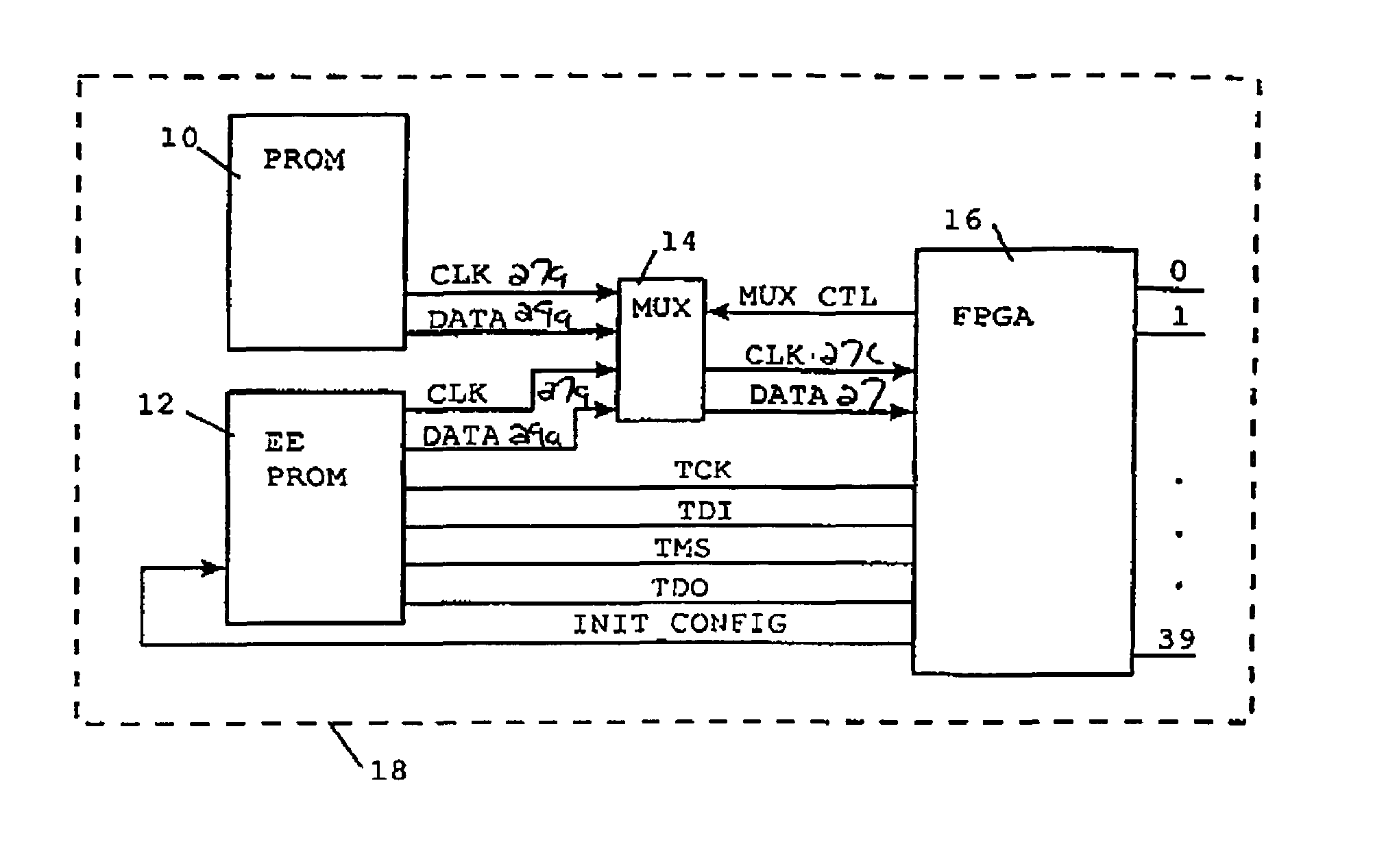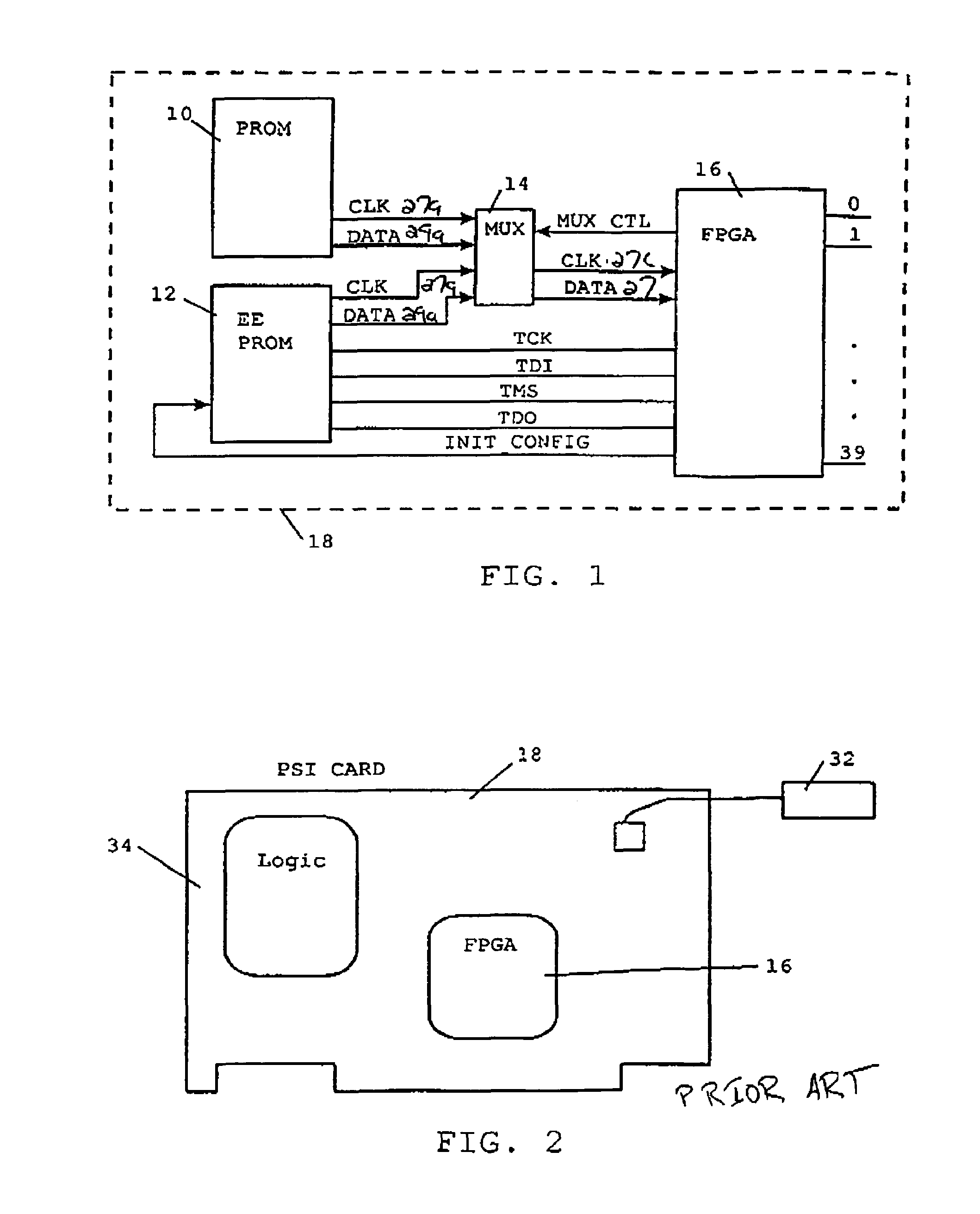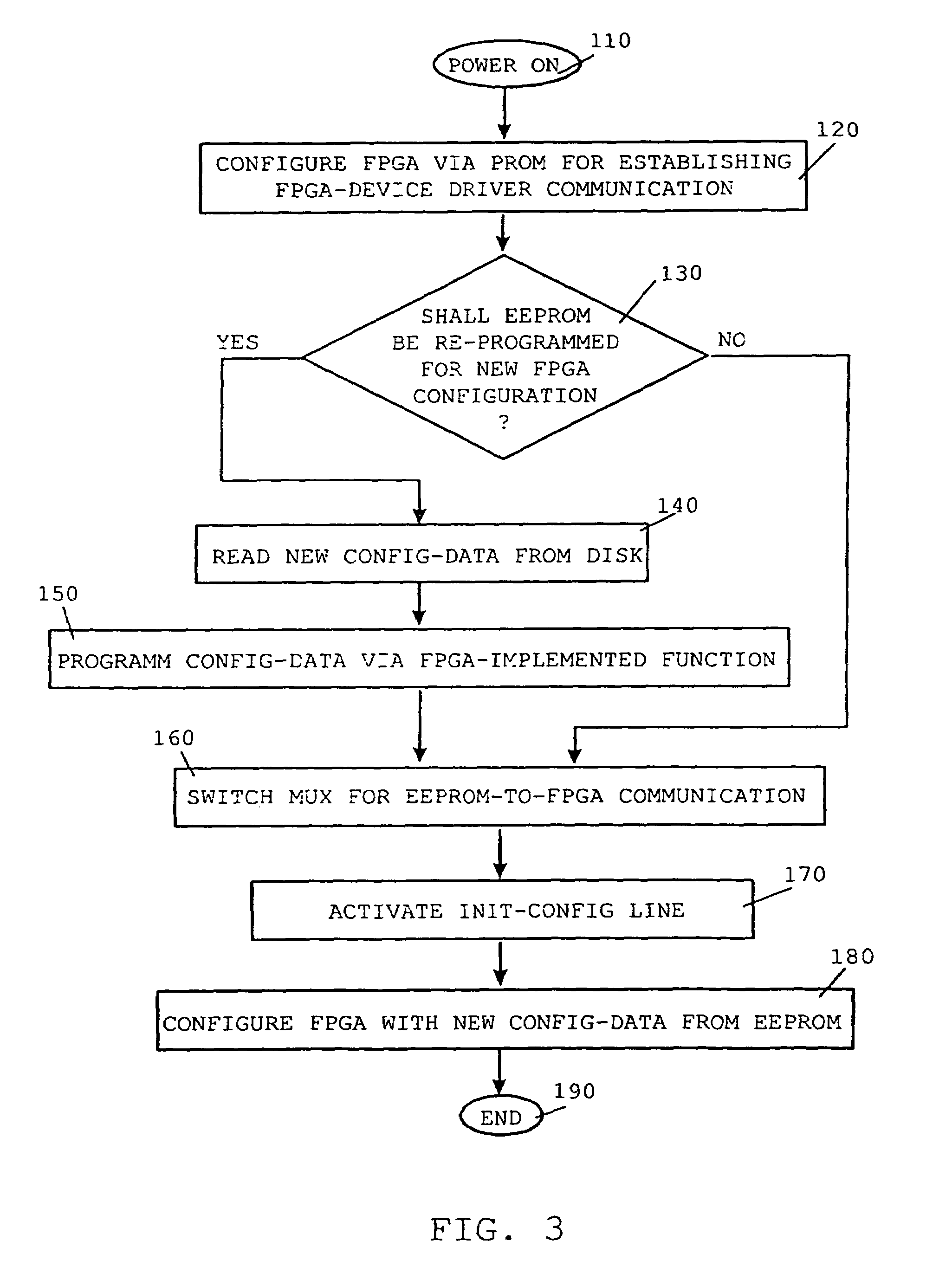Method and system for programming FPGAs on PC-cards without additional hardware
a pc-card and gate array technology, applied in the field of programmable gate arrays, can solve the problems of additional work and bear the risk of damage to other hardware connected in the computer casing, and achieve the effects of reducing costs, reducing average development time and facilitating re-programming
- Summary
- Abstract
- Description
- Claims
- Application Information
AI Technical Summary
Benefits of technology
Problems solved by technology
Method used
Image
Examples
first embodiment
[0029]In accordance with the method of the present invention, the EEPROM 12 used to program the FPGA 16 shall be programmed with a new update of FPGA 16 development schema mentioned above, which corresponds to the YES-branch in decision 130. Any prior art device driver reads the schema, which recognizes the configuration data from a disk 140 to where it was written by the schema development tool and programs these data into the EEPROM 12 via the dedicated function implemented in the FPGA 16 which was mentioned above as program config-data via FPGA 16—implemented function 150.
[0030]In particular, like in prior art, the dedicated JTAG signals Clock (TCK), Data Input (TDI), Mode selection (TMS) and Data Output (TDO) as depicted in FIG. 1. Thus, the EEPROM 12 programming is completed.
[0031]Then, the configuration process for the FPGA 16 with the contents of the EEPROM 12 is triggered by activating the so-called Card—INIT function via the signal line INIT—CONFIG. Said triggering step is ...
second embodiment
[0033]In accordance with the method of the present invention, the EEPROM 12 is already re-programmed. Thus, such cases are covered in which the development of a new FPGA 16 configuration schema is completed. In this case the method as depicted in FIG. 3 continues after the start-up procedure, step 110 with PROM 10 involved, step 120, leaves the decision 130 via the NO-branch and continues with step 160 as described above.
[0034]In the foregoing specification the invention has been described with reference to specific exemplary embodiments thereof. It will, however, be evident that various modifications and changes may be made thereto without departing from the broader spirit and scope of the invention as set forth in the appended claims. The specification and drawings are accordingly to be regarded as illustrative rather than in a restrictive sense.
[0035]It should be noted that the present invention is independent from the bus system in use with the PC hosting the FPGA schema develop...
PUM
 Login to View More
Login to View More Abstract
Description
Claims
Application Information
 Login to View More
Login to View More - R&D
- Intellectual Property
- Life Sciences
- Materials
- Tech Scout
- Unparalleled Data Quality
- Higher Quality Content
- 60% Fewer Hallucinations
Browse by: Latest US Patents, China's latest patents, Technical Efficacy Thesaurus, Application Domain, Technology Topic, Popular Technical Reports.
© 2025 PatSnap. All rights reserved.Legal|Privacy policy|Modern Slavery Act Transparency Statement|Sitemap|About US| Contact US: help@patsnap.com



